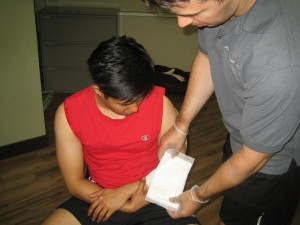An electric shock happens when the body is directly exposed to an electrical source. The electrical energy flows through an area in the body causing shock. Exposure to electrical energy can cause minimal or severe injuries and even death.
Lightning strikes are natural forms of electric shock. Remember that burns are common injury due to electrical shock and lightning strikes. Some people experience an electric shock from man-made objects such as electrical circuitry, electrical appliances and electrical wires.
Common injuries from an electric shock
- Low-voltage electricity does not usually cause serious injury.
- High-voltage electricity can cause significant damage to the tissues.
- Severe injuries have an entrance and exit point in the body.
Remember that burns are common injury due to electrical shock and lightning strikes. - Injuries from lightning may or may not cause external burns but some can die due to injury or respiratory cardiac arrest. Electrical shock can cause severe contraction of the muscles.
Symptoms
- Severe external burns
- Cardiac arrest.
- Shortness of breath and chest pain due to internal injuries.
Treatment
- Separate immediately the affected person from the source of the current.
- Unplug device or machine if the plug is not damaged or turn off the electricity through the fuse box, circuit breaker or external switch.
- If the power cannot be turned off, stand on anything that is dry and non-conducive such as a wooden board.
- If the person is safe to touch and not breathing or does not have a pulse, perform CPR.
- Perform chest compressions by positioning the heel of one hand on the breastbone amidst the nipples. Position the heel of the other hand over the first hand and perform 30 chest compressions.
- If the person has difficulty breathing, cover his/her mouth, pinch the nose close and deliver 2 rescue breaths. Every breath must take about a second and allow the chest to rise. Continue performing CPR and recue breathing until the medical team arrives.
- If there is bleeding, place pressure and raise the affected area if it is in the leg or arm.
Disclaimer
The material posted on this page for electric shock is for learning purposes only. If you want to learn to properly manage sudden medical emergencies including electric shock, register for a first aid course with a training provider near you.

